![]() a social entrepreneur
a social entrepreneur
 JP | EN
JP | EN
 JP | EN
JP | EN
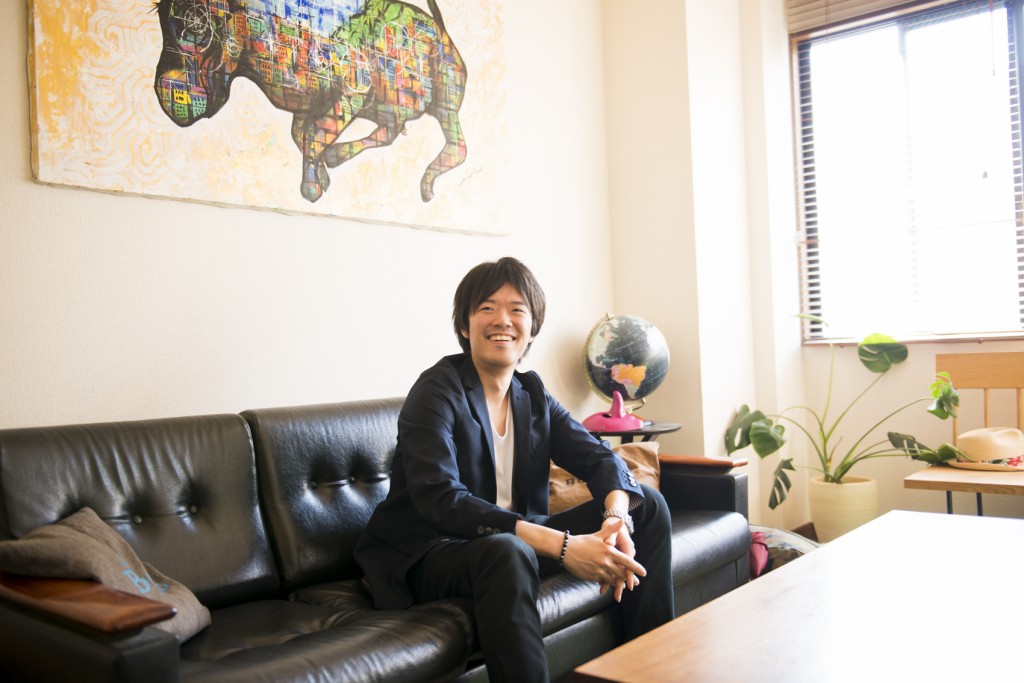
“When the earthquake hit, I lived in neighboring Miki City north of Kobe and did not suffer any major damage. I have only scattered memories but can remember that I felt a strong quake and my mother threw herself over me to protect me when I was in bed. Having witnessed people around me being unsettled, I could sense that something devastating had happened even though I was only a child. These memories might have been developed by stories that my parents told me later on incorporated with my scattered memories.”
“I reached a major turning point in seminar activities, in which students learn about service marketing for intangible businesses, such as the tourism and hospitality industries. I met a wonderful teacher who welcomes any type of students and brings out the individuality in each of them.”
Around that time, Radio Kansai approached us with a program aimed to find out whether local people can use the medium of radio to offer necessary information on their own by using an outside broadcasting van when a disaster strikes. With the assumption that they can do that if students can, we started to work on the project, focusing on disaster prevention and mitigation measures by using the broadcasting van.”
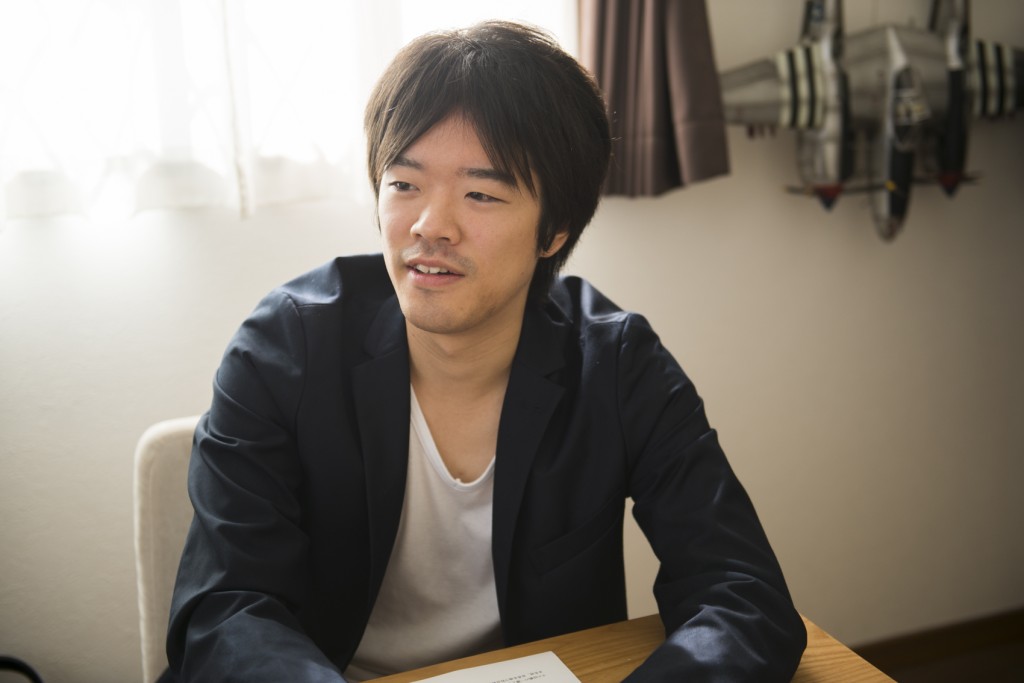
“I became interested in topics, such as disaster prevention and disaster mitigation, when I knew how serious the damage was and how the affected people felt at that time. A total of about 10 students in the seminar voluntarily initiate actions one after another.”
“On the day of the festival, I had another task of covering the event since I was the chief editor of the campus newsletter. Therefore, in the radio van project, I was engaged in gathering information prior to broadcasting, recording, and other related works. The project ended up a success. It involved an experiment in which no cell phones were allowed to be used for a week, as well as research on stockpiling food with a good taste. I believe that survival is the most important thing immediately after a disaster, but, after a while, we need to think of how to meet requirements and solve issues emerging when affected people feel a little relief.
“Surprisingly, the contest was being held for the first time, so we felt as if it had been launched for us. Our team was named FM Free. The story we created was that when a major earthquake struck 10 years later, we, as grown-ups, were dedicated to recovery efforts by leveraging knowledge and experience we gained in university. Although we regretfully came in second place, the award for excellence, I had never been committed to anything with such enthusiasm before.”
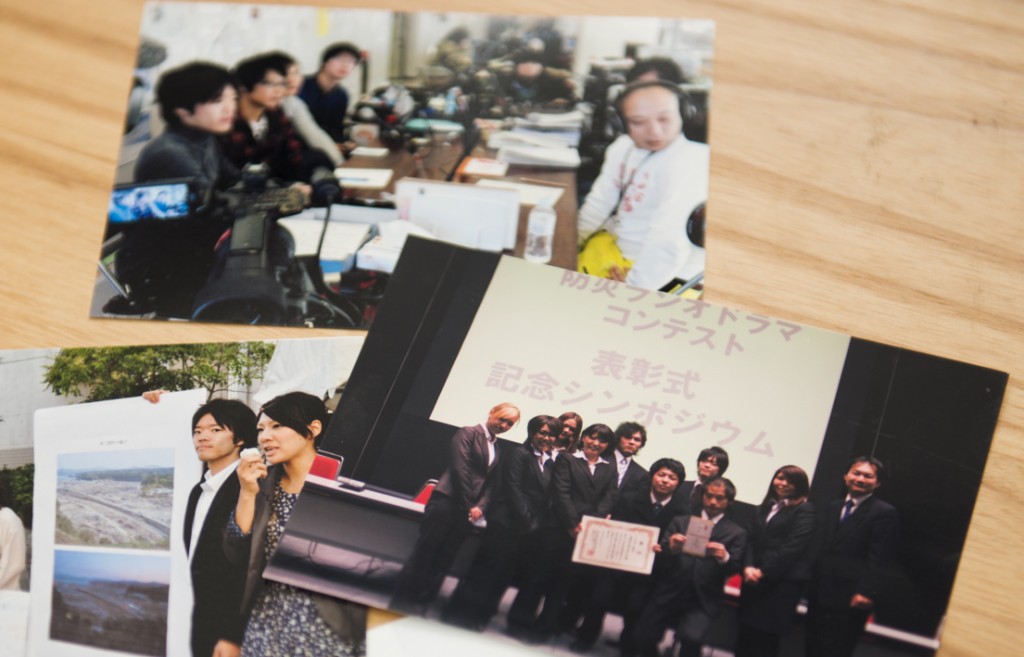 Photo: FM Free won the award for excellence in a disaster-prevention radio drama contest.
Photo: FM Free won the award for excellence in a disaster-prevention radio drama contest.“It was the moment that what we had learned became a reality. We were stopped from going to the disaster-stricken area because it was said to be dangerous. There was also a practical problem in that if we missed classes at university, we may have failed to earn credits. Therefore, we focused on the fund-raising activities.
In the seminar, nobody talked about what kind of actions they were engaged in. I guess our teacher also did not want to deal with the devastating disaster as an educational tool. We, however, somehow sensed that each member was doing everything they could at that time.”
“I met the three seniors just returning from Iwate Prefecture at the airport, even though they looked very exhausted, and asked them all about the affected areas until late at night. As I listened to them, I kept thinking about what I can do.”
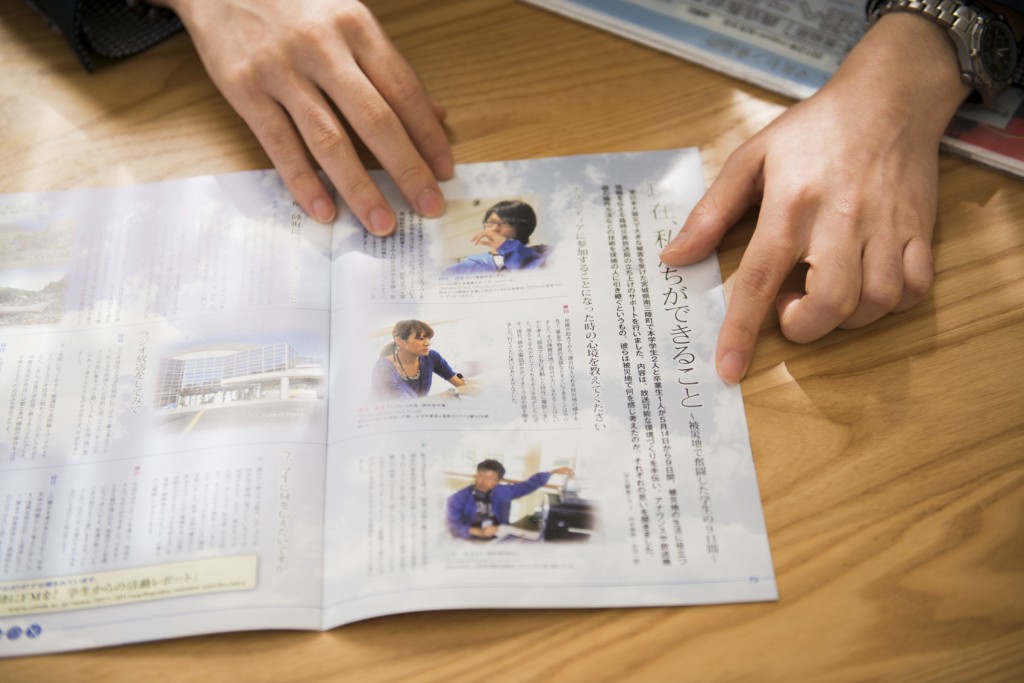 Photo: Campus newsletter reporting about the senior students who successfully launched a temporary FM radio station for disaster in Minami-sanriku in Iwate Prefecture
Photo: Campus newsletter reporting about the senior students who successfully launched a temporary FM radio station for disaster in Minami-sanriku in Iwate Prefecture“When I heard people in Nagata Ward say that everyone looked depressed after the earthquake, maybe because it was dark in the towns, I realized what to do. I was also advised that lamps should not cost much for local communities to run. We worked to put up lamps which would operate for the next ten years, by selecting solar-powered lamps, which require no power-distribution work, and processing them with a special plating method to add rust-proofing which can resist salty sea wind.”
“Since I could set a clear goal for the fund-raising activities, I became rather motivated. I often visited Shin-Nagata, one of the worst-affected areas, to raise money, and some people tearfully told me about the experiences they had faced. I strongly felt that it was also my responsibility to tell their stories.”
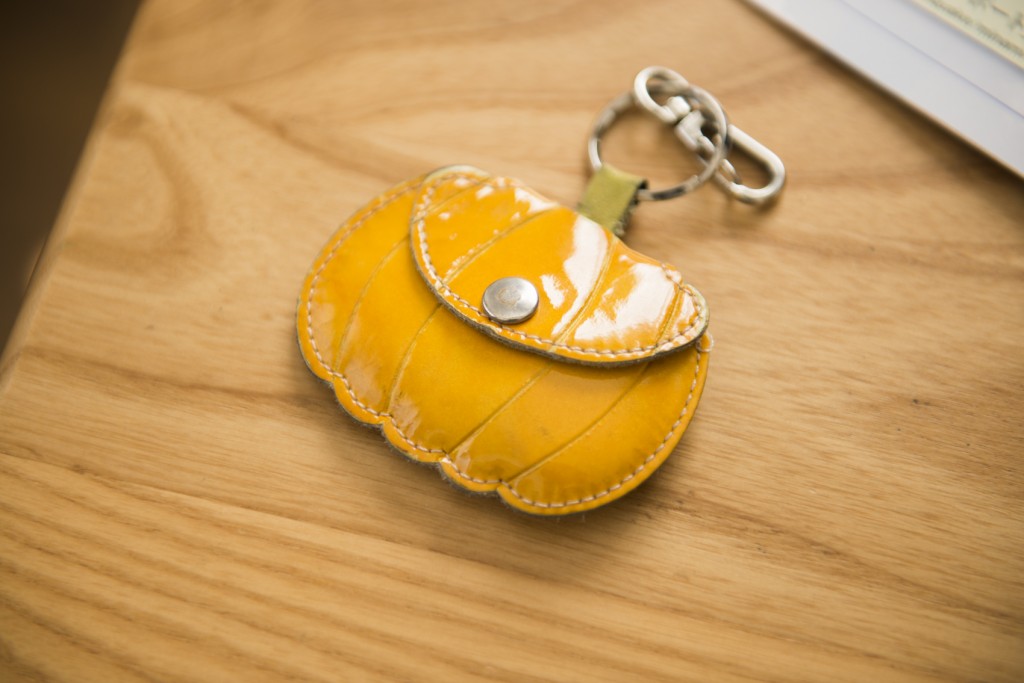 Photo: A key holder made in collaboration between the Minami-machi Murasaki Market, a Reconstructed Shopping Street in Kesennuma City in Miyagi Prefecture, and a leather artisan based in Nagata Ward in Kobe City
Photo: A key holder made in collaboration between the Minami-machi Murasaki Market, a Reconstructed Shopping Street in Kesennuma City in Miyagi Prefecture, and a leather artisan based in Nagata Ward in Kobe City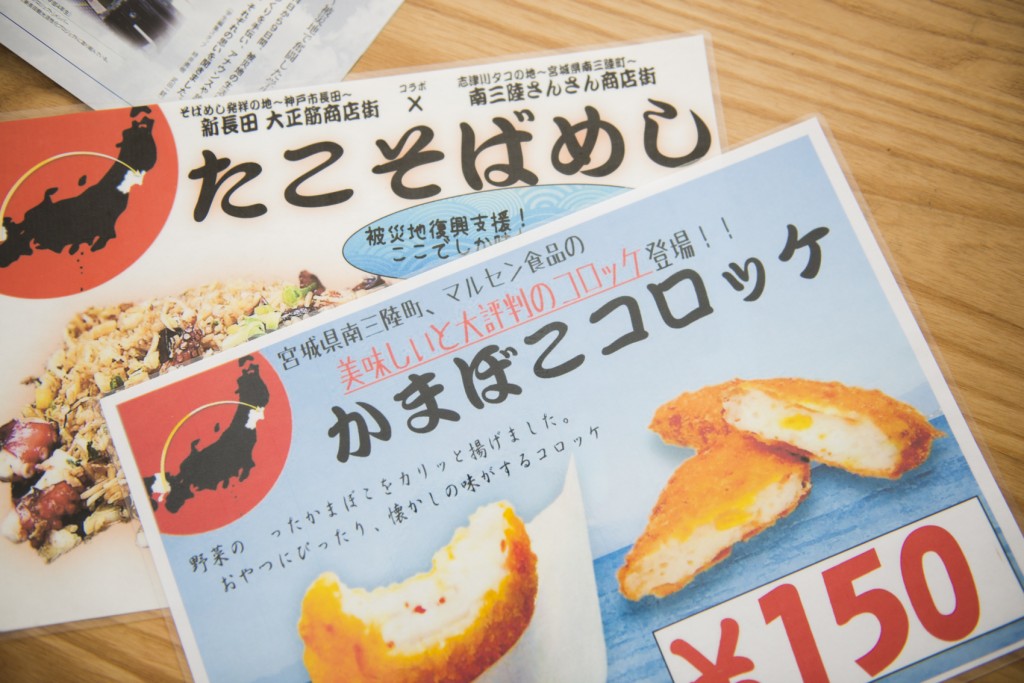 Photo: Tako-soba-meshi, for which Mr. Tokii was involved in product development, and Kamaboko (Japanese fish cake) Croquettes were well-received at the event
Photo: Tako-soba-meshi, for which Mr. Tokii was involved in product development, and Kamaboko (Japanese fish cake) Croquettes were well-received at the event“My first product was a business card holder developed together with a leather artisan in Nagata. Incorporating techniques in which leather is processed millimeter by millimeter, we never compromised functionality. When the product was completed, I was more eager to contribute to revitalizing local industries.”
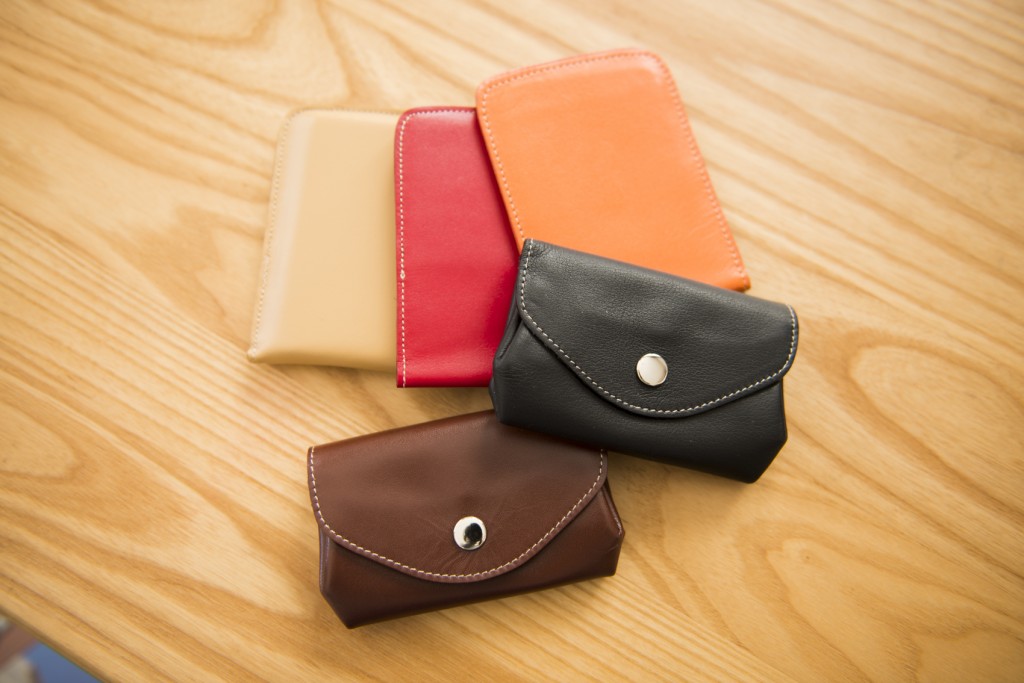 Photo: Business card holders and coin cases, the first products by REVEARC Inc.
Photo: Business card holders and coin cases, the first products by REVEARC Inc.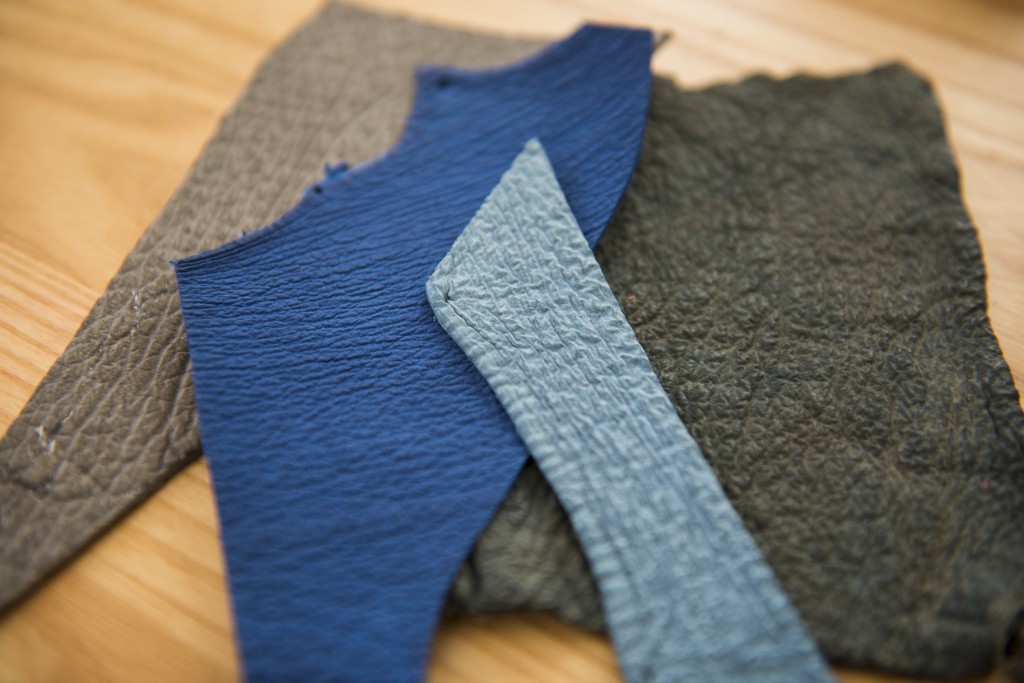 Photo: Shark skins featuring a unique texture, expected to serve as a key material for the future
Photo: Shark skins featuring a unique texture, expected to serve as a key material for the future“My current mission is to create new systems by pondering what to do to support the affected areas. I want to share our activities and jointly developed products with people not only in Japan but also around the world. By doing so, I will be able to say that I made a difference in the reconstruction projects in a few decades from now. I will keep devoting myself entirely to these projects.
Yuki Tokii
Yuki Tokii, the president of REVEARC Inc., serves as the vice chairperson of the Kobe Tomoshibi (lighting) Project. Having learned about disaster prevention in university and been engaged in reconstruction activities in the aftermath of the Great East Japan Earthquake, he founded a company in 2013 to provide continual support. With a strong desire to extend financial assistance as a business, he is currently committed to developing and branding products made from materials from disaster-stricken areas.